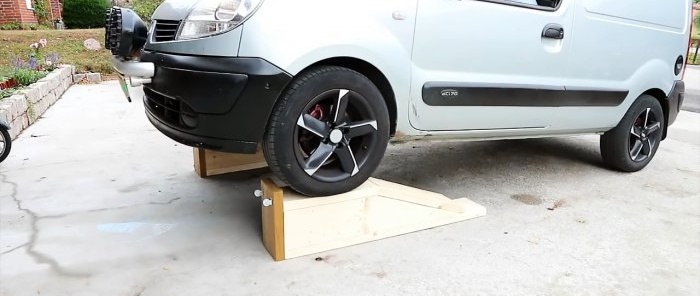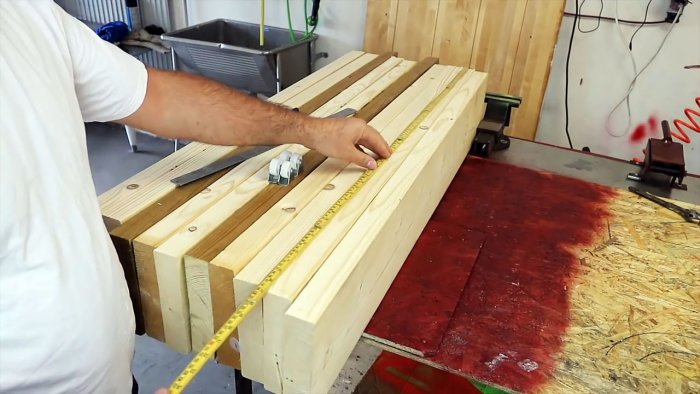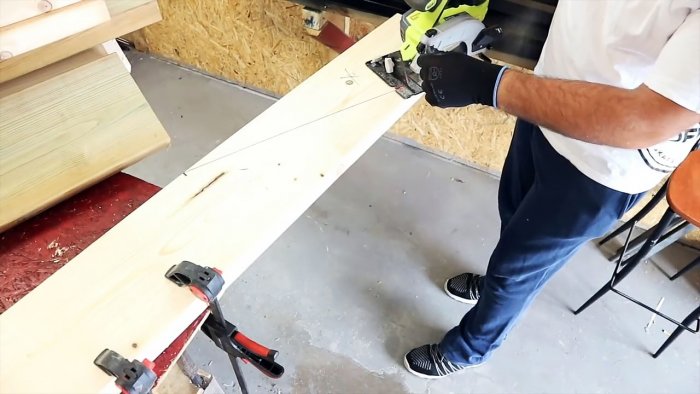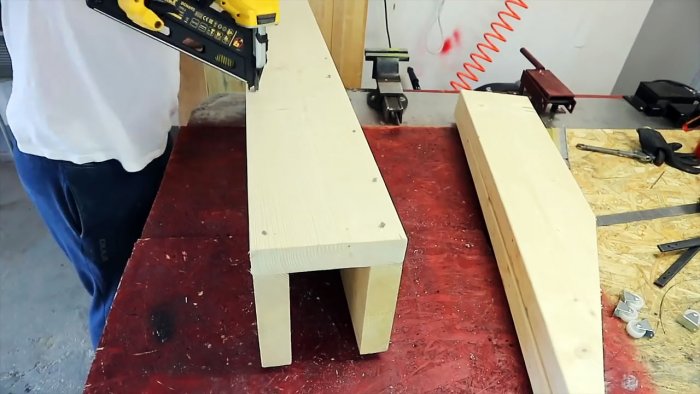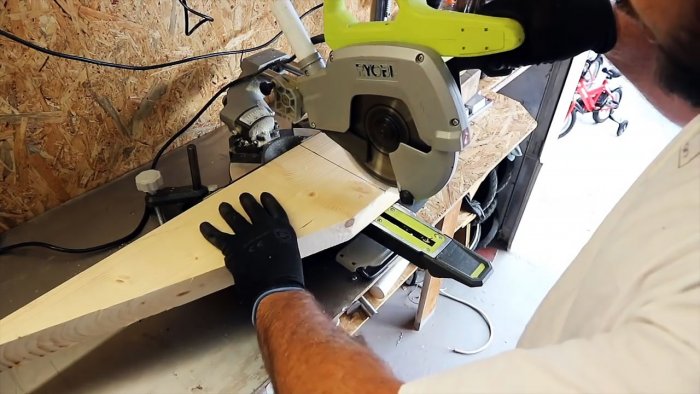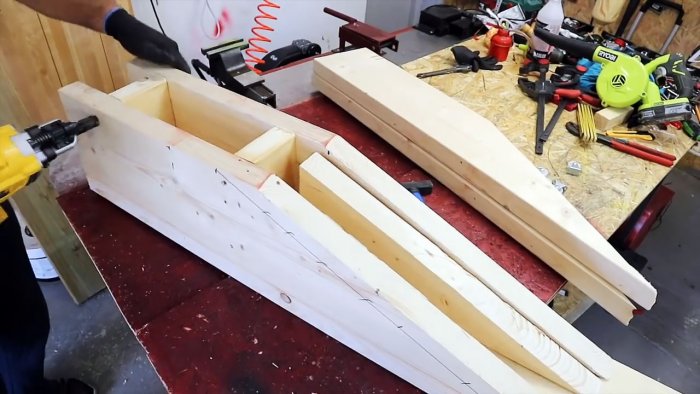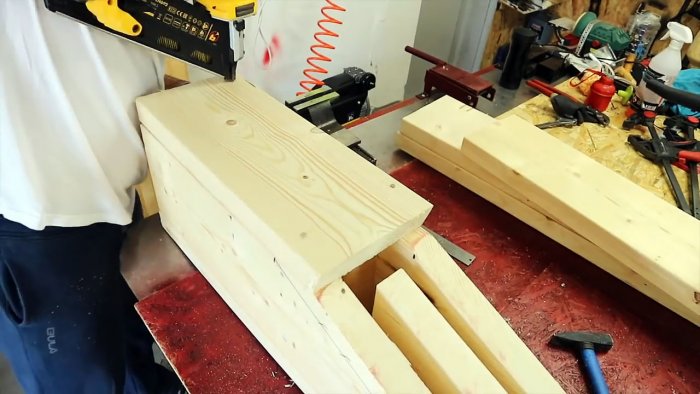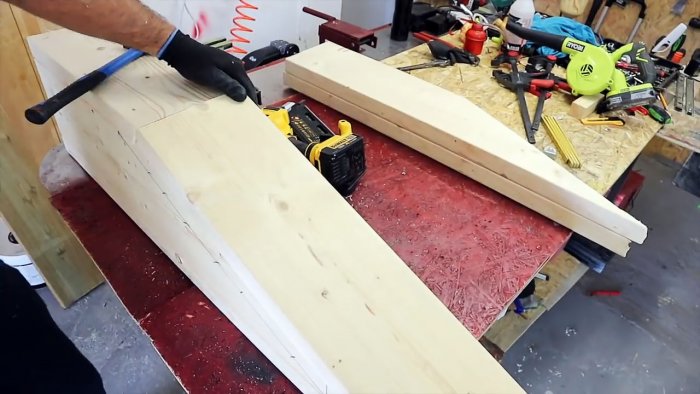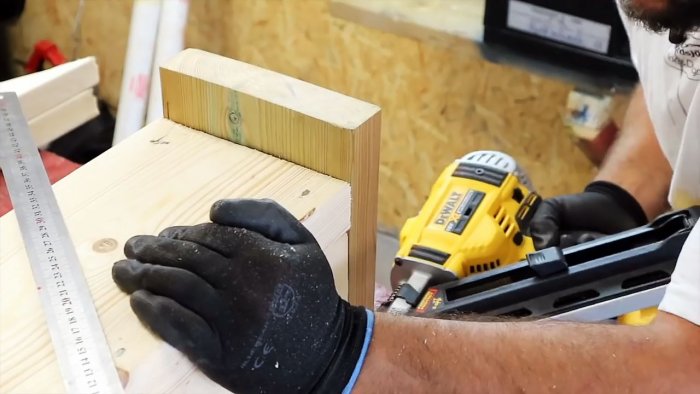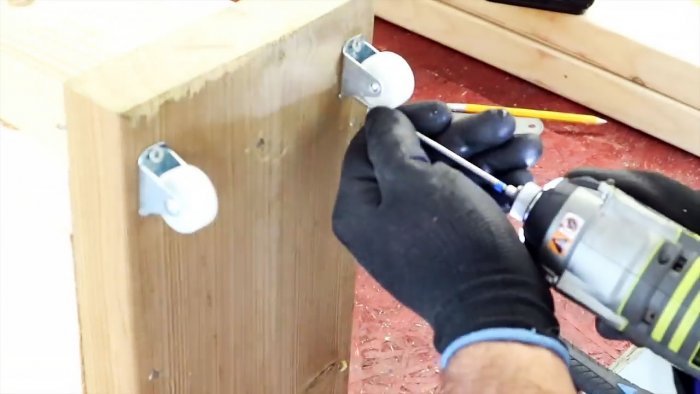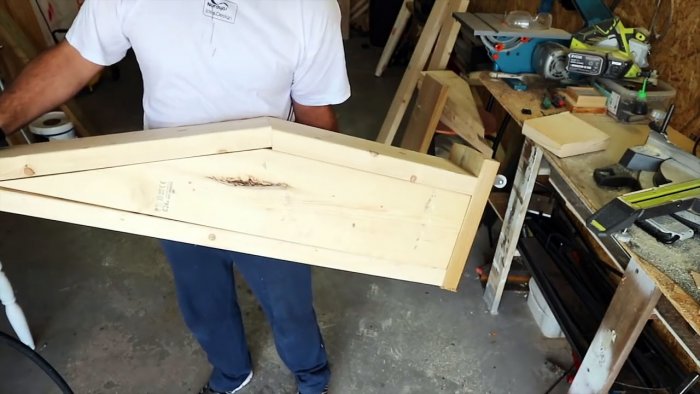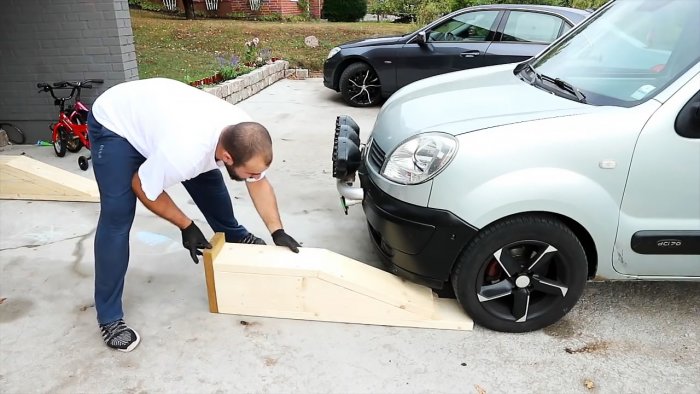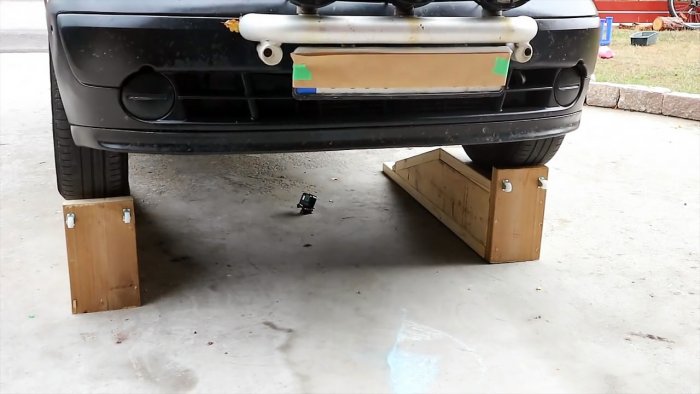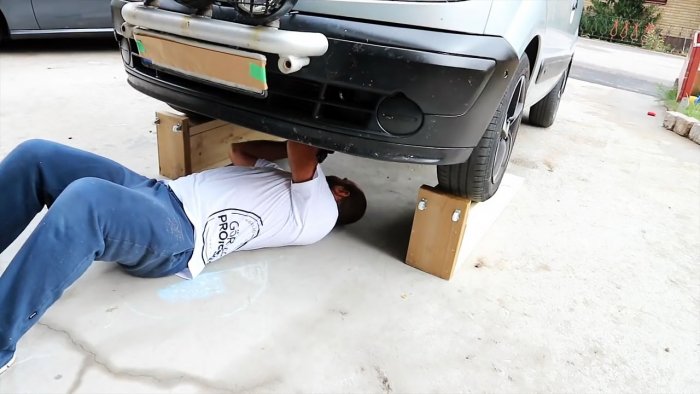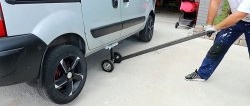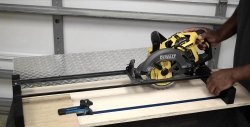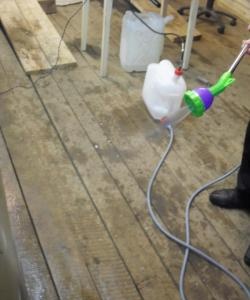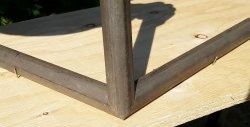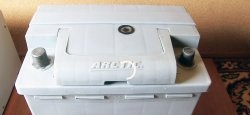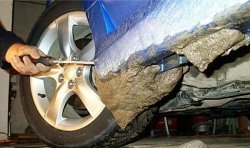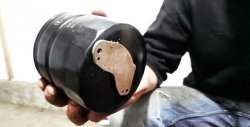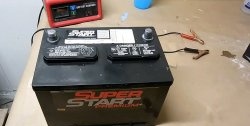DIY mini overpass for cars
There may not always be an overpass or lift nearby to inspect the car from below for preventive purposes or replace some part. A mini ramp will help you not to depend on external circumstances; you can make it yourself quickly, without much effort and expense.
The easiest way to make this device is from wood, so we need to prepare:
In our work we will use the following tools and accessories: tape measure, ruler and marker, circular and pendulum saw, nail gun, screwdriver, clamps and hammer.
We make the side profile of the ramp from six edged boards.
To do this, taking into account the size of the wheels and the front overhang of the car, use a tape measure and a marker to mark an inclined line on one of them.
We cut the marked board with a portable circular saw. Using the first blank as a template, we mark the remaining five and also saw them.
We lay four side profiles in pairs in parallel on a flat surface with the base up and at the calculated distance from each other.
For each pair of side profiles we lay a board flush with their ends. Using a nail gun, we fasten these ramp elements with nails, which we finally finish off with a hammer.
To control, use a ruler to measure the distance between the side profiles in several places. From the fifth and sixth blanks with the contours of the side profile, we cut off two pairs of rectangular bars with a pendulum saw, taking into account the measurements taken.
We insert them at the beginning and end of straight sections of the side profiles, which will serve as spacers and at the same time amplifiers. We secure them on the outside with nails.
We place the remaining wedge-shaped elements between the inclined sections of the side profiles and, fixing them from above with one nail in a suitable place, fasten them from below through the base board.
We cover the upper horizontal platform with a board, aligning its end with the ends of the side profiles, and make a mark on it for the cross section.
We nail the short part of the board to the horizontal section of the side profiles. We dock the long part to the short one and secure it with nails to the inclined section.
We cover the open ends of the ramps with a board and cut it off slightly above the top of the horizontal platform. This protrusion will serve as a limiter for the wheels, preventing them from rolling off the platform. We also secure them to the ends with nails.
We screw two rollers transversely to the upper part of the restrictive element from below using screws and a screwdriver. Rollers will allow you to move the ramp, if necessary, by rolling, which is much easier than carrying it by weight or dragging it.
We roll up and lay the ramp in front of the front wheels of the car.
We carefully move the car forward, overcoming the inclined section of the ramp, and drive the front wheels onto a horizontal platform. We put the car on the handbrake. It would also be a good idea to place a stop under the rear wheel.
We make sure that the distance from the floor to the bottom of the machine has become quite spacious and you can easily sit under it for routine inspection or repair.
Having completed the work, carefully drive off the ramp and put it in a secluded place, where it will remain until the next use.
Will need
The easiest way to make this device is from wood, so we need to prepare:
- edged boards of the required length;
- rollers for furniture or carts – 4 pcs.;
- screws and nails.
In our work we will use the following tools and accessories: tape measure, ruler and marker, circular and pendulum saw, nail gun, screwdriver, clamps and hammer.
Order of operations
We make the side profile of the ramp from six edged boards.
To do this, taking into account the size of the wheels and the front overhang of the car, use a tape measure and a marker to mark an inclined line on one of them.
We cut the marked board with a portable circular saw. Using the first blank as a template, we mark the remaining five and also saw them.
We lay four side profiles in pairs in parallel on a flat surface with the base up and at the calculated distance from each other.
For each pair of side profiles we lay a board flush with their ends. Using a nail gun, we fasten these ramp elements with nails, which we finally finish off with a hammer.
To control, use a ruler to measure the distance between the side profiles in several places. From the fifth and sixth blanks with the contours of the side profile, we cut off two pairs of rectangular bars with a pendulum saw, taking into account the measurements taken.
We insert them at the beginning and end of straight sections of the side profiles, which will serve as spacers and at the same time amplifiers. We secure them on the outside with nails.
We place the remaining wedge-shaped elements between the inclined sections of the side profiles and, fixing them from above with one nail in a suitable place, fasten them from below through the base board.
We cover the upper horizontal platform with a board, aligning its end with the ends of the side profiles, and make a mark on it for the cross section.
We nail the short part of the board to the horizontal section of the side profiles. We dock the long part to the short one and secure it with nails to the inclined section.
We cover the open ends of the ramps with a board and cut it off slightly above the top of the horizontal platform. This protrusion will serve as a limiter for the wheels, preventing them from rolling off the platform. We also secure them to the ends with nails.
We screw two rollers transversely to the upper part of the restrictive element from below using screws and a screwdriver. Rollers will allow you to move the ramp, if necessary, by rolling, which is much easier than carrying it by weight or dragging it.
Checking the ramp in action
We roll up and lay the ramp in front of the front wheels of the car.
We carefully move the car forward, overcoming the inclined section of the ramp, and drive the front wheels onto a horizontal platform. We put the car on the handbrake. It would also be a good idea to place a stop under the rear wheel.
We make sure that the distance from the floor to the bottom of the machine has become quite spacious and you can easily sit under it for routine inspection or repair.
Having completed the work, carefully drive off the ramp and put it in a secluded place, where it will remain until the next use.
Watch the video
Similar master classes
Particularly interesting
Comments (8)

